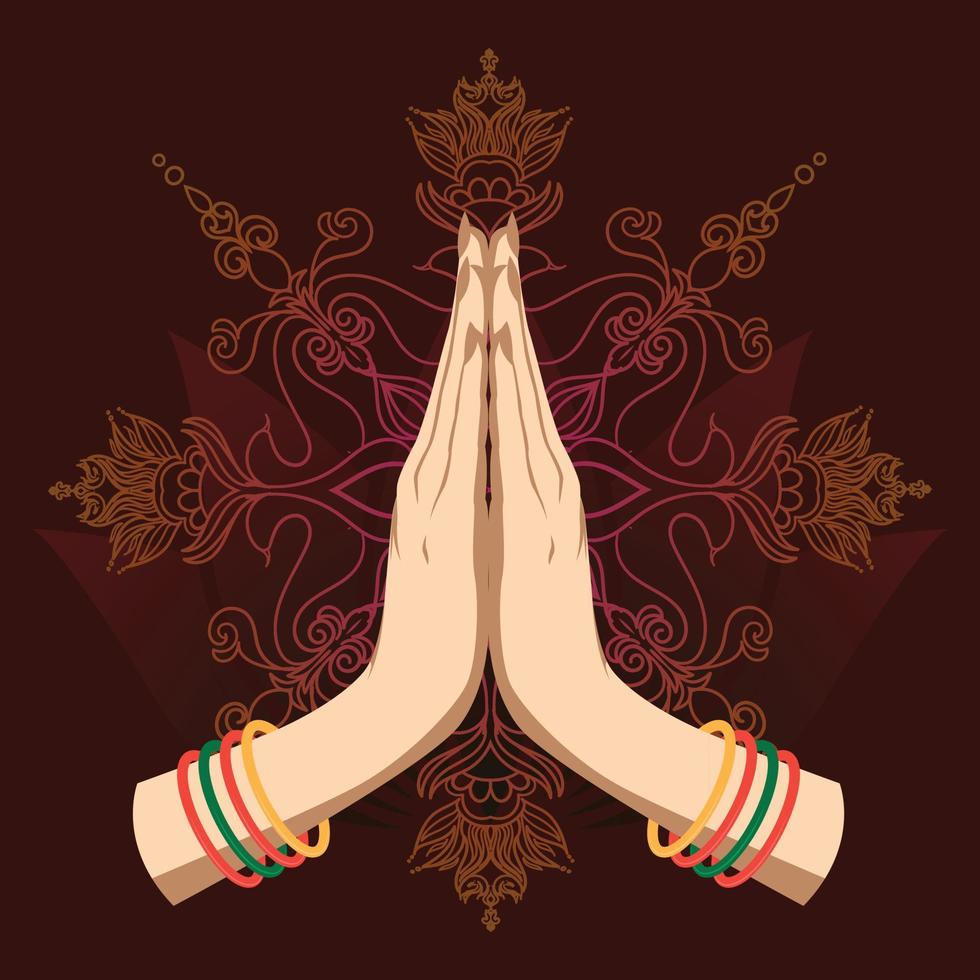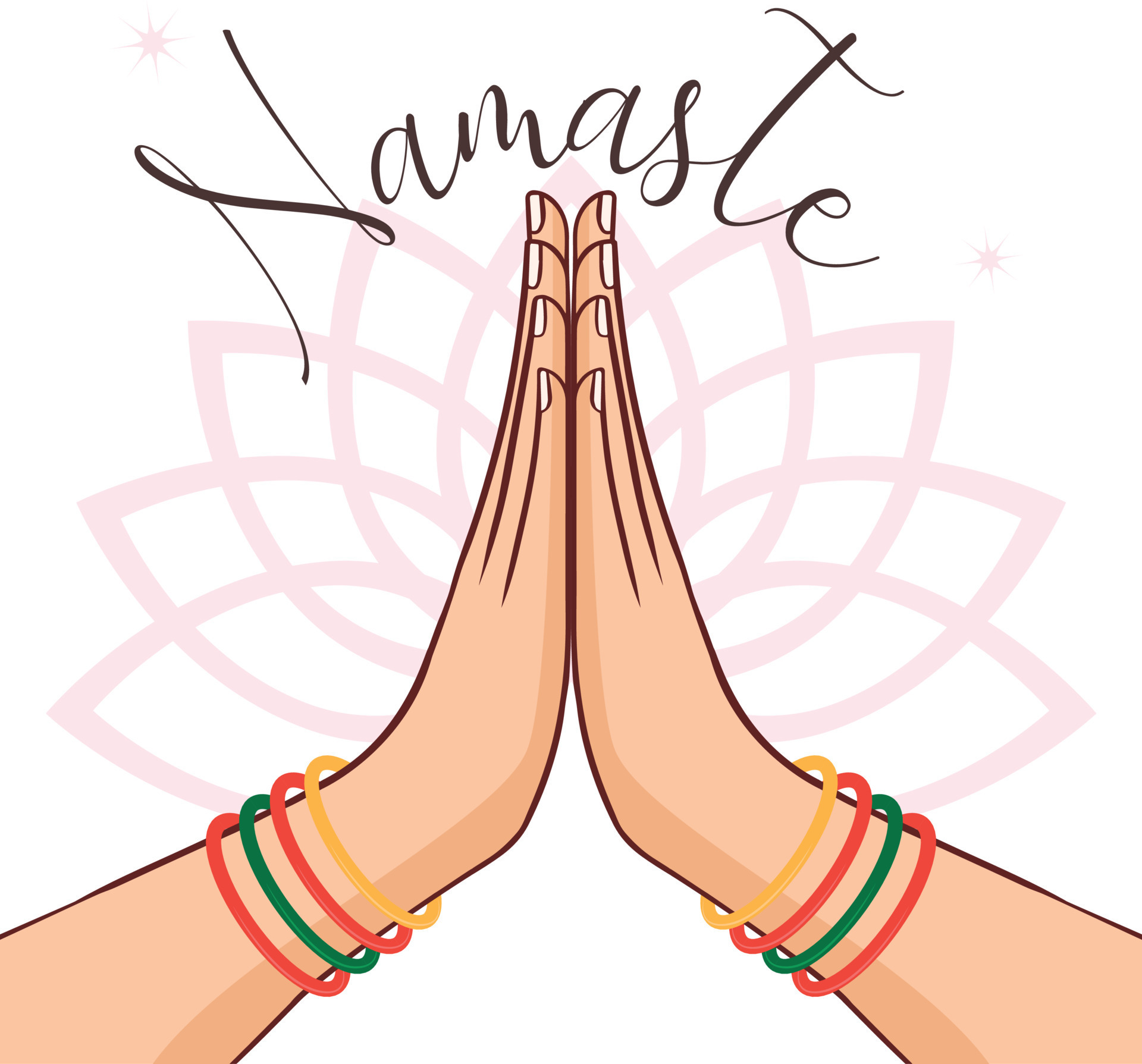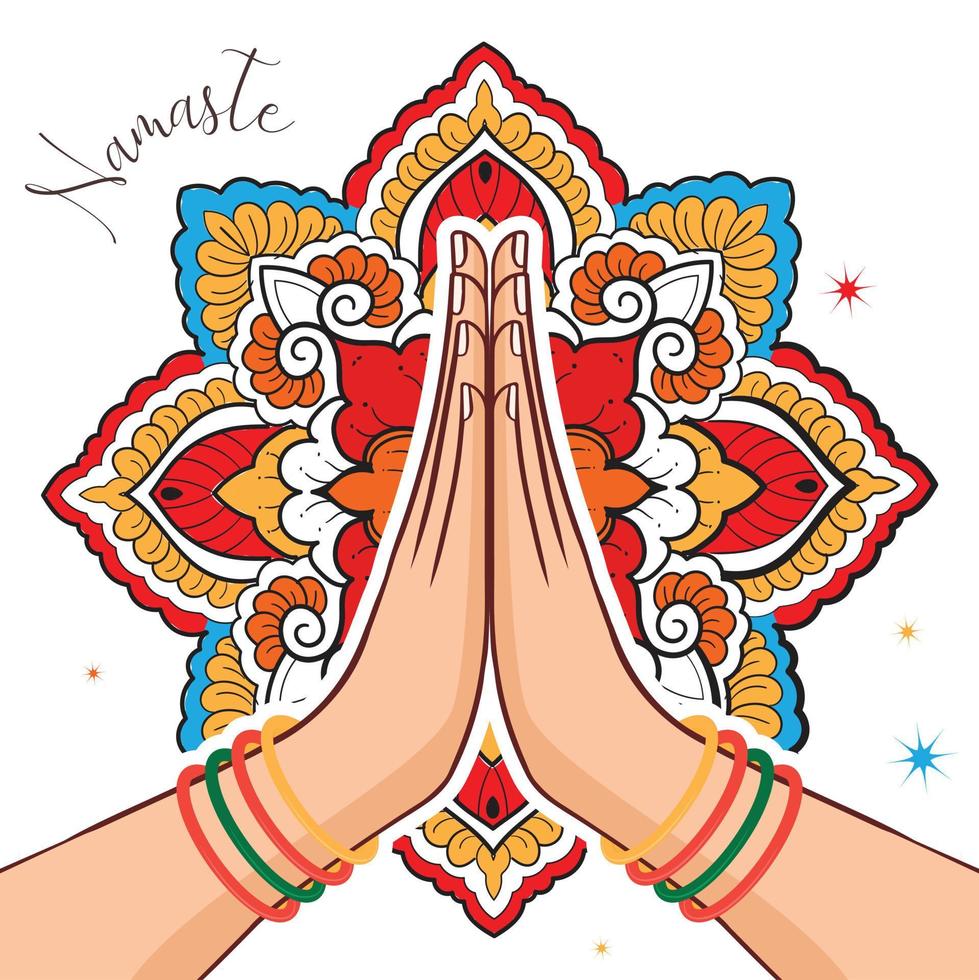Have you ever wondered about that word you hear at the end of a yoga class, or perhaps see written in a place that feels a little bit spiritual? It’s a word that seems to carry a quiet weight, a sense of something important, yet its full significance might not be immediately clear. This word, "Namaste," is actually a very old phrase from a language called Sanskrit, and it has a beautiful depth that goes far beyond a simple hello or goodbye. People often use it, and honestly, its true heart is quite special, a way of acknowledging something good and true in others.
So, what does this particular word truly stand for? It's really interesting because while many people know it, the deeper layers of its meaning are sometimes overlooked. It's a way of speaking that has traveled quite a distance, from ancient traditions right into our modern conversations, especially in spaces where quiet reflection and connection are valued. This simple sound, just a little, holds a big idea about respect and seeing the goodness in everyone around you, which is pretty cool if you think about it.
This expression, you know, has roots that reach back through time, tying into very old ways of thinking about how we connect with each other and with something larger than ourselves. It's used in various cultures, particularly where Hinduism, Buddhism, and Jainism have been present for a long while. It’s not just a quick phrase; it’s a whole gesture, often with hands pressed together, that speaks volumes without making a sound. We’re going to look closely at what this "namaste meaning" really entails, from its origins to how it’s used today, and why it matters.
Table of Contents
- What is the Literal Namaste Meaning?
- Where Did the Namaste Meaning Come From?
- The Spiritual Side of Namaste Meaning
- How Do People Use Namaste Meaning in Daily Life?
- The Physical Gesture with Namaste Meaning
- Why Has the Namaste Meaning Become So Popular?
- Modern Interpretations of Namaste Meaning
- A Deeper Look at Namaste Meaning
What is the Literal Namaste Meaning?
When you break down the word "Namaste," it's actually two parts from the Sanskrit language. The first part is "namah," and the second is "te." So, what do these pieces tell us about the namaste meaning? "Namah" has a few related ideas behind it, like giving praise, showing honor, making a slight bow, offering a respectful greeting, or even expressing adoration. Then there's "te," which is quite simple; it just means "to you." So, when you put those two together, you get something along the lines of "bowing to you" or "I bow to you." It's a straightforward way to express a deep sense of regard for another person.
It's not just a casual phrase, you know. This simple combination of words carries a sense of humility and recognition. It suggests that the person speaking is acknowledging the presence of the other in a very respectful way. It’s a very direct statement, yet it also implies a certain posture, a way of approaching someone with a sense of reverence. This basic understanding of the namaste meaning is a good place to start because it shows us the core idea of respect that runs through everything else.
You might think of it as saying, "I see you, and I hold you in high esteem." It's a way of greeting that isn't about hierarchy but about mutual respect, which is pretty nice. The literal translation really sets the stage for all the deeper layers of significance that this phrase holds. It’s a bit like opening a door to a much larger room, where the initial bow is just the first step inside. This plain way of putting things, so, helps us grasp the initial layer of the namaste meaning without getting too caught up in complex ideas right away.
- Iran Population Mid 2025 Estimate
- How Many Feet Is A King Size Bed
- Mozelle Drink
- Samuel Whitten Actor Wikipedia
- Florida Panthers Brad Marchand
Where Did the Namaste Meaning Come From?
The origins of "Namaste" are quite old, reaching back to Sanskrit, which is an ancient Indo-Aryan language. It came into English, apparently, fairly recently for such an old word, which is interesting. The word "namah" itself, meaning "bow, obeisance, adoration," comes from a verb, "namati." This verb means "(she or he) bends, bows." So, you can see how the idea of bowing or bending is deeply woven into the very structure of the word. It's not just a concept; it's an action embedded in the language itself, which is kind of cool.
This linguistic background tells us that the namaste meaning has always been about showing deference or respect through a physical or metaphorical bending. It's a traditional greeting, especially in places like India and Nepal, and has been for a very long time. It’s not something new that just popped up; it has a long, rich history tied to cultural practices and ways of interacting. The phrase itself carries the weight of generations of respectful exchanges, which is something to think about.
In some respects, the history of this word shows how deeply ingrained the idea of respect for others is in certain traditions. It's not just a word; it's a piece of cultural heritage that has been passed down, adapting a little, perhaps, but always keeping its core message intact. This lineage gives the namaste meaning a special kind of power, a feeling of connection to something very old and deeply valued. It's quite something to consider how a simple word can carry so much history.
The Spiritual Side of Namaste Meaning
Beyond its straightforward translation, the namaste meaning truly opens up when you look at its spiritual depth. It's often understood to mean "I bow to you" or, more profoundly, "the divine light in me salutes the divine light in you." This idea suggests that there's a sacred spark, a bit of the divine, within every person. So, when you say "Namaste," you're not just greeting someone; you're recognizing and honoring that sacred essence within them. It's a very powerful way to connect, in a way, on a spiritual level.
This recognition of the divine in oneself and others is a really important part of the namaste meaning. It implies a sense of shared humanity, a belief that we are all connected by something greater than our individual selves. It encourages humility because you're acknowledging something profound in another, and it fosters a sense of unity. It’s a way of saying, "I see the best, the most sacred part of you, and I honor it," which can feel very uplifting for both people involved.
This deeper spiritual significance is what makes "Namaste" more than just a simple greeting; it carries a deep philosophical weight. It's a gesture of respect, honor, and a recognition of the inherent worth and sacredness in every individual. This understanding of the namaste meaning can lead to a sense of gratitude for the experience of connection and a recognition of personal growth that happens when you truly see others in this way. It's a beautiful thought, honestly, that such a short phrase can hold so much meaning.
How Do People Use Namaste Meaning in Daily Life?
In many parts of India and Nepal, "Namaste" is a very common way to greet someone, whether you're meeting them for the first time or saying goodbye. It's used in daily conversations, much like saying "hello" or "goodbye" in other places. But even in these everyday settings, the underlying namaste meaning of respect and honor is still present. It’s a polite and traditional expression that shows good manners and a certain reverence for the person you are interacting with, which is something we could all use a bit more of, arguably.
You'll often see it used in various contexts, like in yoga and meditation practices, where it has gained a lot of recognition globally. In these settings, it often marks the beginning or end of a session, serving as a way to acknowledge the shared experience and the connection formed during practice. It's a way to express gratitude to the instructor and fellow participants, embodying the deeper spiritual namaste meaning of unity and shared inner light. It really helps to bring a sense of closure and appreciation to the practice.
Beyond formal practices, it's a versatile expression. It can be used to pay respects to elders, to declare devotion, or simply as a polite form of salutation. The way it's used shows that it’s more than just words; it’s a cultural practice that reflects certain values. It’s a way of interacting that builds connection and shows a deep regard for others, which is pretty fundamental to healthy communities. So, it's not just a phrase; it's a way of life, in some respects, for many people.
The Physical Gesture with Namaste Meaning
Often, when someone says "Namaste," it's accompanied by a specific physical gesture. This gesture is called "añjali mudrā." It involves joining the palms together, usually in front of the chest, near the heart, with fingers pointing upwards, and then bowing the head slightly. This physical act adds another layer to the namaste meaning, making it a complete expression of respect and recognition. It's a simple movement, yet it carries a lot of symbolism, you know?
The gesture itself has a spiritual significance. When you bring your palms together, it's often seen as bringing together the two sides of yourself, the material and the spiritual, or the left and right, into a unified whole. The slight bow of the head is an act of humility and reverence, acknowledging the divine spark within the other person. This combined verbal and physical expression makes the namaste meaning even more powerful and heartfelt. It really shows a deep level of respect and connection, honestly.
This combination of words and action creates a very full and meaningful interaction. It's not just a quick wave or a handshake; it’s a moment of pause and intentional connection. The gesture reinforces the idea of "I bow to you" and the recognition of shared divinity. It's a beautiful way to communicate without needing many words, just a little, and it speaks volumes about the respect being offered. This pairing of sound and movement truly captures the essence of the namaste meaning.
Why Has the Namaste Meaning Become So Popular?
You've probably seen the word "Namaste" in many places, maybe on a sign outside a yoga studio or heard someone say it. Its recognition has grown quite a bit, especially in recent times. Part of this widespread acceptance comes from its use in yoga and meditation practices, which have become very popular around the world. As these practices have spread, so too has the word and its associated namaste meaning. It's almost like it's become a symbol for a certain kind of mindful, respectful living.
The appeal of "Namaste" also lies in its universal message of respect, gratitude, and unity. In a world that can sometimes feel disconnected, this word offers a way to acknowledge and honor the shared humanity in each person. Its profound significance, rooted in humility and the recognition of shared divinity, resonates with many people seeking deeper connections and a more meaningful way to interact. It’s a very simple yet powerful concept that crosses cultural boundaries, which is pretty amazing, actually.
People are drawn to its spiritual essence and the feeling of authentic connection it encourages. It's a word that suggests peace and mutual regard, qualities that many people value. The fact that it's more than just a simple greeting, carrying deep cultural and philosophical significance, makes it stand out. So, its popularity is not just a passing trend; it reflects a desire for more respectful and spiritually aware interactions, which is, you know, a good thing to see.
Modern Interpretations of Namaste Meaning
While "Namaste" has very deep cultural and spiritual roots, its namaste meaning has changed a little in how it's understood and used in modern times. For many, especially outside of its traditional contexts, it might be seen primarily as a polite and peaceful way to say hello or goodbye, particularly within wellness communities. It still carries that sense of respect, but perhaps without all the intricate spiritual layers that are inherent in its original use. It's a bit like a word adapting to new environments, still keeping its core, but perhaps simplifying its message just a little.
In some contemporary settings, it’s a way to express a feeling of goodwill or positive energy towards another person. It’s a recognition of a shared space, like a yoga class, where everyone is working towards a common goal of well-being. This more generalized use still holds a positive intent, even if the explicit idea of "divine light" isn't always at the forefront of someone's mind when they say it. It’s a very flexible word, in a way, that can mean different things to different people while still being positive.
This evolution shows how language can adapt and spread. The essence of respect and recognition remains, but the specific interpretations can vary depending on who is using the word and in what situation. It's a testament to the word's inherent power that even with these shifts, it continues to convey a sense of warmth and connection. So, whether it's a deeply spiritual salutation or a friendly farewell, the namaste meaning continues to foster positive interactions, which is, you know, really what matters.
A Deeper Look at Namaste Meaning
To truly appreciate the namaste meaning, it helps to consider its various layers. It's a phrase that encourages authentic connection with others and with a sense of the sacred. It’s a reminder to see beyond the surface and to acknowledge the inherent worth and light within every person you meet. This deeper view moves past just the literal translation and invites a more profound engagement with the world around you. It’s quite a powerful idea, honestly, for such a simple word.
The phrase embodies humility, gratitude, and unity. When you use it, you are not just speaking words; you are engaging in a practice of recognition and reverence. It's a way of declaring your devotion to the principle of seeing the good in others and treating them with honor. This understanding fosters a sense of shared humanity and encourages a more compassionate approach to interactions. It’s a very conscious way of communicating, which is pretty neat.
Ultimately, the namaste meaning is about connection. It's about recognizing the spiritual growth that happens through respectful interaction and fostering a sense of community. It's a traditional expression that has gained global recognition for its timeless message of respect and shared essence. It's a simple word that carries a profound message, inviting us to approach each other with an open heart and a respectful spirit. It’s quite a beautiful thing to carry with you, really.
This article has looked at the namaste meaning from its origins in Sanskrit, explaining how it literally translates to "I bow to you." We explored its spiritual significance, where it represents acknowledging the divine light within oneself and others. We also covered its common use as a traditional greeting in daily life, especially in India and Nepal, and its connection to the physical gesture of joining palms and bowing. The article discussed why this phrase has become widely known, particularly through yoga, and how its meaning has been interpreted in modern contexts, while still retaining its core message of respect and unity. Finally, we considered the deeper importance of namaste in fostering authentic connection and recognizing the inherent worth in every person.
Related Resources:



Detail Author:
- Name : Mrs. Kailey Barrows
- Username : gina57
- Email : rose.balistreri@turcotte.com
- Birthdate : 1987-03-20
- Address : 9055 Feest Pine Apt. 225 South Kellieberg, WA 23818
- Phone : +13366065406
- Company : Sauer-Auer
- Job : Financial Analyst
- Bio : Modi soluta sit quod. Necessitatibus sunt tenetur rerum.
Socials
linkedin:
- url : https://linkedin.com/in/clement_real
- username : clement_real
- bio : Aliquid quae porro non provident.
- followers : 2357
- following : 2762
tiktok:
- url : https://tiktok.com/@clement2024
- username : clement2024
- bio : Minus fugit veritatis libero atque illum sed dolor.
- followers : 1214
- following : 1288
twitter:
- url : https://twitter.com/clementfunk
- username : clementfunk
- bio : Neque ratione et rem. Sed vitae ut repudiandae et nulla. Ad suscipit aut est culpa alias unde. Voluptatem ex doloribus nihil laborum sunt distinctio enim.
- followers : 4772
- following : 737
facebook:
- url : https://facebook.com/clement_xx
- username : clement_xx
- bio : Quia quidem rerum sunt autem qui voluptas.
- followers : 5456
- following : 330